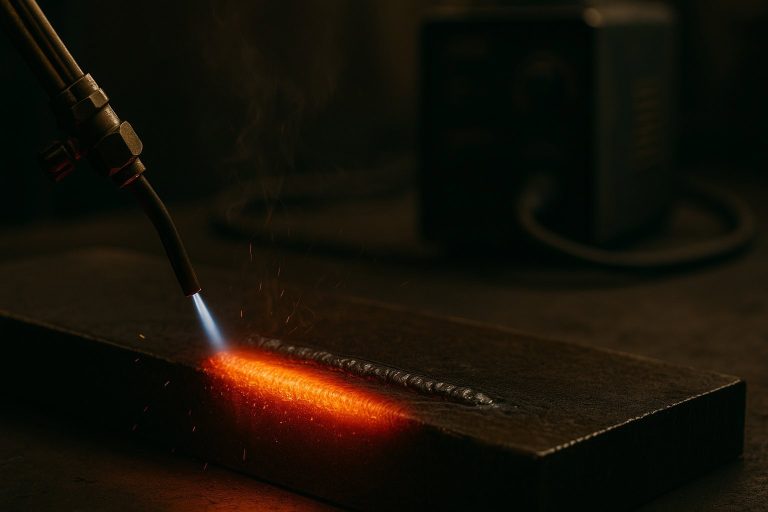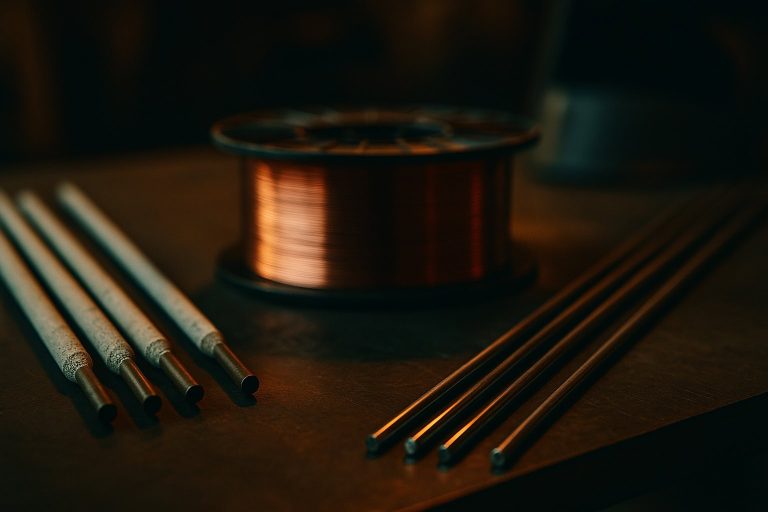The Basics of Welding Copper
June 15, 2021

You may recognize copper on the outside of homes and know of its value for electrical wires and plumbing, but it is also a critical component in audio devices, musical instruments, water tanks, and more.
But have you ever given much thought to the process behind how copper is shaped into these everyday needs and how welding makes it all possible? Let’s discuss some of the basics.
What is Copper?
Copper is a type of metal that can be deformed and reshaped without losing its toughness or strength. It is a good conductor of heat and electricity and is often used in the construction, plumbing, and electrical industries. It also can be great for interior and exterior home design.
When combined with other alloys and elements, it becomes even stronger and makes it more appealing for industrial uses. When added to other elements, it can be more easily machined (or cut to fit a specific measurement), be more resistant to corrosion, and responsive to heat. These alloys can include brass and nickel-copper, zinc, tin, aluminum, and silicon.
Welding with Copper
To enhance the overall strength of copper, it needs to be combined with other elements. This joining process can be completed using a brazing, soldering, or welding process — depending on the alloys used. Often, welding is the preferred method with copper because it can reach higher temperatures and allow for fusion at the joint.
It usually requires a shield to protect the metal from contamination or oxidization. Depending on the welding job needed, you will pick the welding technique that best suits the filler material needed, the thickness of the job, access points for welding joints, and gas mixture.
Welding Techniques
The most common welding techniques include Gas Metal Arc Welding or MIG Welding, Manual Metal Arc Welding, and Gas Tungsten Arc welding. As with all welding techniques, it is important to maintain a uniform speed throughout the seaming process, and the filler rod should be kept in the molten puddle. This ensures the rod can maintain a consistent penetration level for the strongest possible weld.
Gas Metal Arc Welding for copper uses electrodes and automatically “feeds” wire and shield gases into the welding gun. It requires a filler metal with a narrow weave. Manual Metal Arc Welding is used to perform maintenance on copper or copper alloys. It typically uses a direct current positive electrode with the stringer bead technique.
Gas Tungsten Arc Welding is similar to most arc welding processes but uses an electrical arc for heating and melting the copper and the filler material. However, it is slightly different than other techniques as it does not use a consumable electrode to pass electricity to the arc weld. Because of this, it can create a weld joint with or without filler material.
Choosing Copper
When welding copper, it is important to try to avoid any dirty, painted, or plated materials as it can cause the release of hazardous fumes and materials, which can be harmful to your safety. Using clean-plated, oxygen-free, or p-deoxidized copper, will prevent oxidation and enhance conductivity, which is beneficial depending on the type of welding job needed and the end product.
Have Additional Questions? Contact the Experts
Welding with copper is complicated and there are a lot of things to learn about welding this metal. If you have any questions about welding copper, contact Vern Lewis Welding Supply. Our team of professionals is knowledgeable in all welding topics and we are standing by to help. Also, if you are looking to improve your welding skills, we offer welding training and classes in the Phoenix area.
Join Our Newsletter
Sign up for our newsletter to receive specials offers, product updates, and more!






